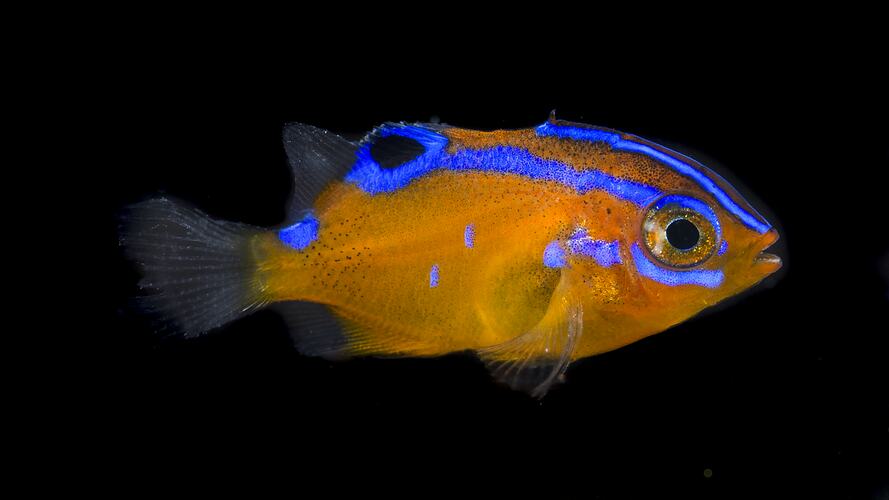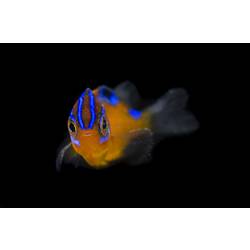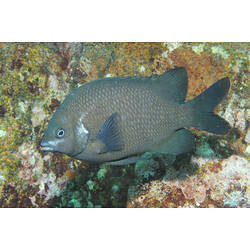General Description
Body deep, head blunt, dorsal fin long-based, caudal fin forked with rounded tips. Yellowish-brown to blackish-grey with a white patch on the gill cover (operculum) at all sizes. Small juveniles bright orange with iridescent blue markings above, and a blue 'eye-spot' on the dorsal fin. Maximum total length 14 cm. White-ears differ from Scalyfins in always having a white spot on the gill cover.
Biology
Grazes a patch of algae and aggressively defends its territory during the breeding season. Males guard and fan the developing eggs.
Distribution
New Zealand and south-eastern Australia.
Habitat
Exposed reefs and rock pools, to depth of 30 m.
More Information
-
Animal Type
-
Animal SubType
-
Brief Id
Yellowish-brown to blackish-grey with a white patch on the gill cover at all sizes. Small juveniles bright orange with iridescent blue markings above, and a blue 'eye-spot' on the dorsal fin.
-
Habitats
-
Diet
Algae
-
Diet Categories
Algae, Invertebrates
-
Endemicity
-
Commercial
No
-
Conservation Statuses
CITES: Not listed, FFG Threatened List: Not listed, EPBC Act 1999: Not listed, IUCN Red List: Not listed
-
Depths
Shallow (1-30 m)
-
Water Column Locations
On or near seafloor
-
Taxon Name
-
Scientific Author
Günther, 1862
-
Common Name
White-ear
-
Kingdom
-
Phylum
-
Subphylum
-
Superclass
-
Class
-
Order
-
Family
-
Genus
-
Species Name
microlepis





